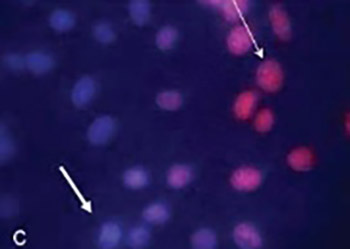Possible involvement of calcium channels and plasma membrane receptors on Staurosporine-induced neurite outgrowth
DOI:
https://doi.org/10.17305/bjbms.2012.2526Keywords:
staurosporine, neurite outgrowth, calcium channels, plasma membrane calcium receptors, PC12 cellAbstract
Staurosporine as a protein kinases inhibitor induced cell death or neurite outgrowth in PC12 cells. We investigated the involvement of calcium channel and plasma membrane receptors on staurosporine inducing neurite outgrowth in PC12 cells. PC12 cells were preincubated with NMDA receptor inhibitors (1.8 mM ketamine and 1μM MK801, treatment 1) or L-Type Calcium channels (100 μM nifedipine and 100 μM flavoxate hydrochloride, treatment 2) or calcium-calmoduline kinasses (10 μM trifluoprazine, treatment 3) and nifedipine, MK801, flavoxate hydrochloride and ketamine (treatment 4 or without pretreatments (control). Then, the cells were cultured in RPMI culture medium containing 214nM staurosporine for induction of neurite outgrowth. The percentage of Cell cytotoxicity and apoptotic index was assessed. Total neurite length (TNL) and fraction of cell differentiation were assessed. After 24h, the percentage of cell cytotoxicity were increased in treatments 1, 2 and 4 compared with control (p<0.05). After 6h, apoptotic index was similar between all treatments. After 12h, apoptotic index were increased in treatment 4 compared with control (p<0.05). After 24h, apoptotic index were increased in treatments 1, 2 and 4 compared with control (p<0.05). TNL were decreased in treatments 1, 2 and 4 compared with control in different times of assessment (6, 12 and 24 h) (p<0.05). The fraction of cell differentiation were decreased in treatments 1, 2 and 4 compared with control (p<0.05). It can be concluded that the possible involvement of L-type calcium channel and the N-methyl D-aspartate receptor on staurosporine-induced neurite outgrowth process in PC12 cells.
Citations
Downloads

Downloads
Additional Files
Published
How to Cite
Accepted 2017-10-02
Published 2012-02-20









